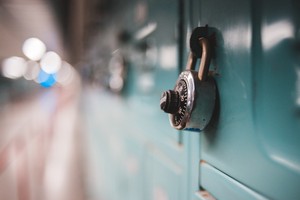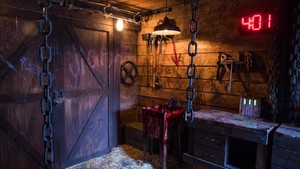
15 most popular puzzle types you can find in an escape room
15 most popular puzzle types you can find in an escape room
Going to the escape room equals solving different jigsaws based on overall difficulty of rooms. Most of us are prepared to do basic maths equation or match the pictures, but these are just the tip of an iceberg. Some tricks may be surprising not only by its solution, but also by its form. Let’s see our list of 15 most popular puzzle types you can find in an escape room and quickly describe how it works.
1. Play it with your head!
Escape rooms are more often than not associated with climatic spaces designed to represent selected scenario. Some of them remind dungeons or prisons, while others take participants to the wonderland or idyllic inn. No matter the design, every escape room is about solving different types of puzzles in order to win. Some of them are perfect for beginners, but you can also find demanding ones, involving real Sherlock Holmes’ skill.
Basically, the very first rule of every single escape room is to play it with your head. Try to separate nerves, rush and other disruptors from the game – the more nerves you involve, the longer you will seek correct solution. If you figure out what type of jigsaw you just stepped in, the easier will be looking for answers. After couple of rooms you will be perfectly skilled in selecting the correct path. Let’s check out 15 most popular puzzle types used in typical escape rooms.
2. Mathematical equations
Here you start with, Albert Einstein, the most common types of puzzles! In almost every single escape room you will find some tasks that require using digits. But don’t be either discouraged or afraid of maths – it’s not integrals and derivatives of logarithmic form. Actually it’s something like primary-school level maths: selecting digits, adding and subtracting correct numbers, multiplication table. Mathematical equations are regularly a necessity to enter valid password or set digits on combination padlock.
3. Count the objects
Another type of challenge requiring mathematical skills on basic levels. This type of jigsaw can be found more often than not in beginners’ level rooms. Sometimes it is used on harder levels as a bait named “too obvious to be right solution”. How it looks like? Imagine a big painting of rural scenery with different animals: seven cows, three horses, one dog and one cat. Now imagine a lock with painted animals: cat, horse, dog, cow. Your challenge is to count the number of requested object and type in correct order: 1 3 1 7.
4. Manipulate with light
What is that, a very bright room in which you can see nothing? I bet that the thing you should do is either switch all lights off or only some of them. Manipulating with light is a trick used usually in intermediate or advanced level rooms. Pay attention to the spots more enlightened than other space or – contrary to that – where the light is not shining at all. If you have a flashlight, torch or other source of light, seek through suspiciously unlit nooks and crannies.
5. Ultraviolet lamps
Continuing with tricky light, there is another common puzzle – ultraviolet trails invisible in regular light, but shining bright under UV lamp. If you find a pen, a keychain or other UV light emitter, be sure there is a hidden clue on the walls. But look carefully – there might be more than one clue written with invisible ink, easily to pass just because you already found one before. UV puzzles are quite popular in themes connected to jail or crime scenarios, both in easier and harder rooms.
6. Mysterious symbols
If you step into a room designed as typical office in Poland, there is nothing special about cross or emblem on the wall. But seeing ankh, pentagram or runic letters may be at least suspicious, not to say odd. Mysterious symbols placed in quite mismatching scenery is a certain way to draw attention. Be aware not to focus too much attention on it – it may be a time-thefting trap. Moreover, don’t expect too obvious answer; room will never give you a tip straightforward.
7. Match the pictures
This jigsaw is quite hard to describe – mostly because its endless variations can be found almost in every single escape room. Example? You found a letter with nothing more than blue 5, red 1, yellow 8 and green 3. You also found four colorful blocks and four holes in the wall. Now, if you match the note with blocks and holes in the wall, you will surely get a picture of solution. Placing red block first, green second, blue as a next one and green as a last one gives you an answer!
8. Find the odd one out
A thing that might be called “reversed matching the pictures” – seeking trough mismatching elements. Be careful – you need to look holistically all over the room and note suspicious activity. Some of them may look innocent or perfectly camouflaged, just to be skipped or missed during first wave of searching. Porcelain doll in dissection room? Bulletproof vest in grandma’s house? Laser pointer in prisoner’s room? You may be surprised how odd objects can be found as props in escape rooms!
9. Place in correct order
Another popular jigsaw requiring logical thinking and basic observation skills. Take a closer look on walls, carpet, tablecloth and other surfaces with patterns. Be aware of repeatable themes broken by some sort of mismatching factor. If you see that, try to fix disturbed order or fit a prop into logically correlated places. When you replace the things, you may see a clue, such as painted arrow or other indicator. Place in correct order jigsaws are usually used as a finisher opening the escape room’s door.
10. Manual activities
Most of us know a trick with bookshelf and hidden gateway from adventure movies. Protagonist pulls different-looking, mismatching book and the whole bookshelf moves. Behind it, there is a hidden corridor, stash or other room with evidences or clues to escape. Pulling the levers, knocking the knocker or pushing the buttons in correct order are quite common, yet amazing and surprising. Manual activities are designed not to use great strength or DIY skills – even child should be able to find a correct solution.
11. Magnetic manipulation
Magnet puzzles are quite a rarity in escape rooms, mostly because their presence is quite underestimated. Beginners usually consider magnetic manipulation quite hard to find, but easy to solve. Experienced players are more often than not surprised that someone used this technique to trick them out. And the whole idea is very simple – one magnetic thing placed to other, usually camouflaged, unlocks the door or releases the key or important message. As simple as that, may one say – but you should test it out to see, if this puzzle is such an obvious riddle.
12. Reflection message
Nope, it doesn’t mean you find a quote of Confucius, Plato, Seneca or other masterminds and you have to rethink it. “Reflection message” usually is connected to the mirror and a letter or message written in special configuration. Although well-skilled person is able to that type typography, a mirror will be definitely useful. Usually reflection message shows a code or an object that is necessary to complete the solution. Sometimes the pocket-size mirror itself is meant to be placed near walls or big objects to find a clue.
13. Ciphers
And we have another variable and regularly used riddle in our list! Ciphers are the essence of escape rooms – no matter if we speak about pigpen, indexing or other consistent system. In easier rooms you will find easier ciphers, such as bolded letters in a text. Hard rooms may entail specific ciphers, such as Caesar’s (letter shifting one space back or forward, e.g. word “SUN” will be written as “RTM” or “TVO”). How should you know what cipher uses your room? Be sure that somewhere near you a clue is hidden.
14. Hidden objects and stashes
One of the basic rules of escape room says: leave no board unopened. This thought applies also to stashes, boxes, chests and other objects commonly considered as means of hiding. You can find there a critical piece of puzzle or vital support, such as flashlight, key or note. Some of boards may be locked and that is a clear sign that behind that doors there is a milestone or even final solution. Don’t be upset if you crack open all of the stashes and you find noting – at least you have less spaces to be swept through!
15. Sound clues
Is it a whisper, a music or just some noises in your head overloaded with jigsaws? If you and your companions can hear the same sound softly playing in the background, I have news for you. The good thing is you just found out another clue – in sound version. The bad news is connected with diversity of meaning. Sound clues may be an indicator guiding you to the critical place. Sound may also contain a code, example: six steps of guardian in corridor means that you need to look for number 6 or insert lacking digit. Sound clues are time-takers or a hard nut to crack for both experienced and beginners.
Best solution? Cooperation!
No matter what happens inside the escape room or what jigsaw you just stepped into, the best solution is to cooperate. Some puzzles are strictly based to activities, that can be done by at least two people. For instance, one person can be locked in a cage, but with a code to lock placed nearby. Second player must locate a padlock and insert correct answer in order to free his companion. As they say, two heads are better than one – and with this sentence we would love to encourage you and your friends to start your escape room adventure! Oh, and don’t mind that locked girl below – the jigsaws and scenario won’t be THAT extreme.







